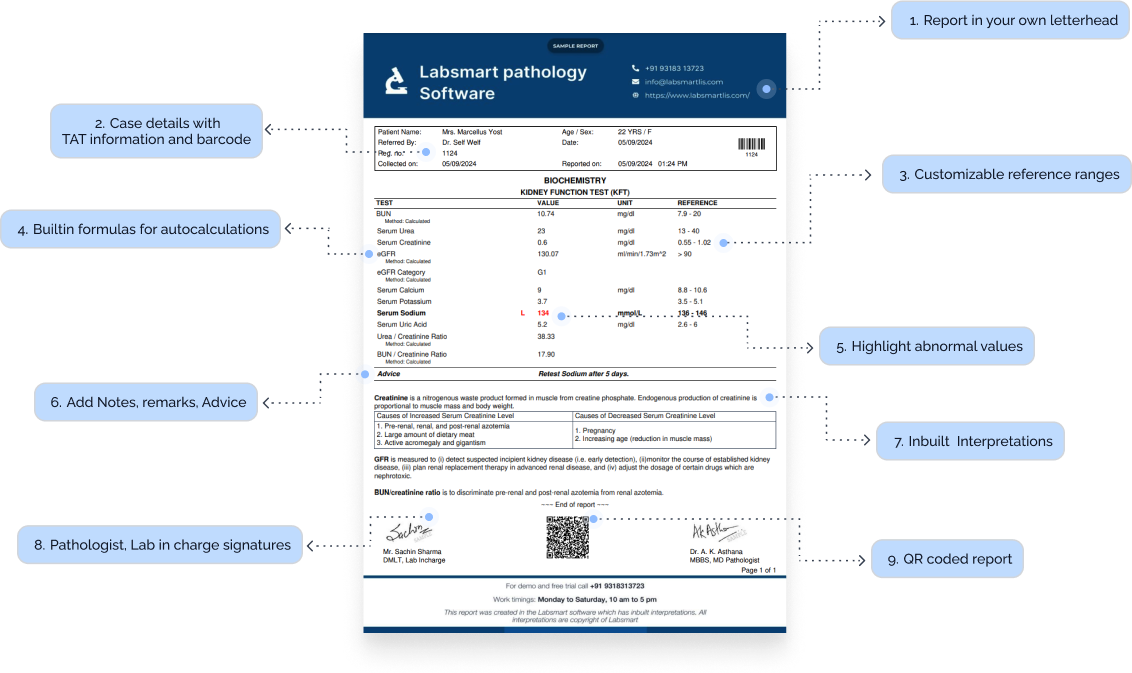What is Blood Group & Rh. ?
Blood typing identifies a person's ABO blood group (A, B, AB, O) and their Rh factor (positive or negative). Knowing a patient's blood group is essential for safe blood transfusions, organ transplants, and even pregnancy monitoring, as mismatched blood types can lead to severe complications. ABO Grouping: Categorizes blood into A, B, AB, or O groups based on the presence of specific antigens on the surface of red blood cells. Rh Factor: Determines if the blood has the Rh antigen. If present, the blood type is Rh positive; if absent, it’s Rh negative.
Blood Group & Rh. Report Format: Breakdown
Here’s what an ideal Blood Group & Rh. report format should include:
Header Information:
- Patient Details: Full name, Age, Gender, and ID.
- TAT information: Timestamp for both sample collection and report generation.
- Doctor's Information: Name of the referral doctor, if applicable.
Test Results Section:
-
Patient's results
As obvious as it is, a test report should definitely have the patient's test result.
Interpretations
Nowadays, most labs prefer to add interpretations to the reports, making the report more patient-friendly. Labsmart software has interpretations of all routine test pre-filled in the software.
Footer Section:
-
Certifications:
Display any relevant accreditations (e.g., NABL, ISO), adding to your lab's credibility.
-
Pathologist and technician signature:
It's mandatory to add a Pathologist and technician signature to the report.
Blood Group & Rh. Interpretation
In Labsmart software, this is the inbuilt interpretation for Blood Group & Rh.
Importance of adding interpretation to reports:
It's very helpful to add interpretation in reports as it makes the reports more patient friendly and also helpful to doctors in some cases. Moreover, presently most labs prefer providing reports with interpretation. Thus, adding interpretation to report will help your lab stay at par with other competitor labs.
Labsmart Pathology Reporting Software
(With Interpretation and auto calculations)
- Billing
- Reports with Interpretation
- Auto calculation where needed
- Check daily business
- WhatsApp reports

1.5 Crore+
Reports printed & delivered online
1250+
Labs Active
10+
Countries
Blood Group & Rh. MS Word format
Download the Ms word editable Blood Group & Rh. report format for offline reporting.
Download word format








